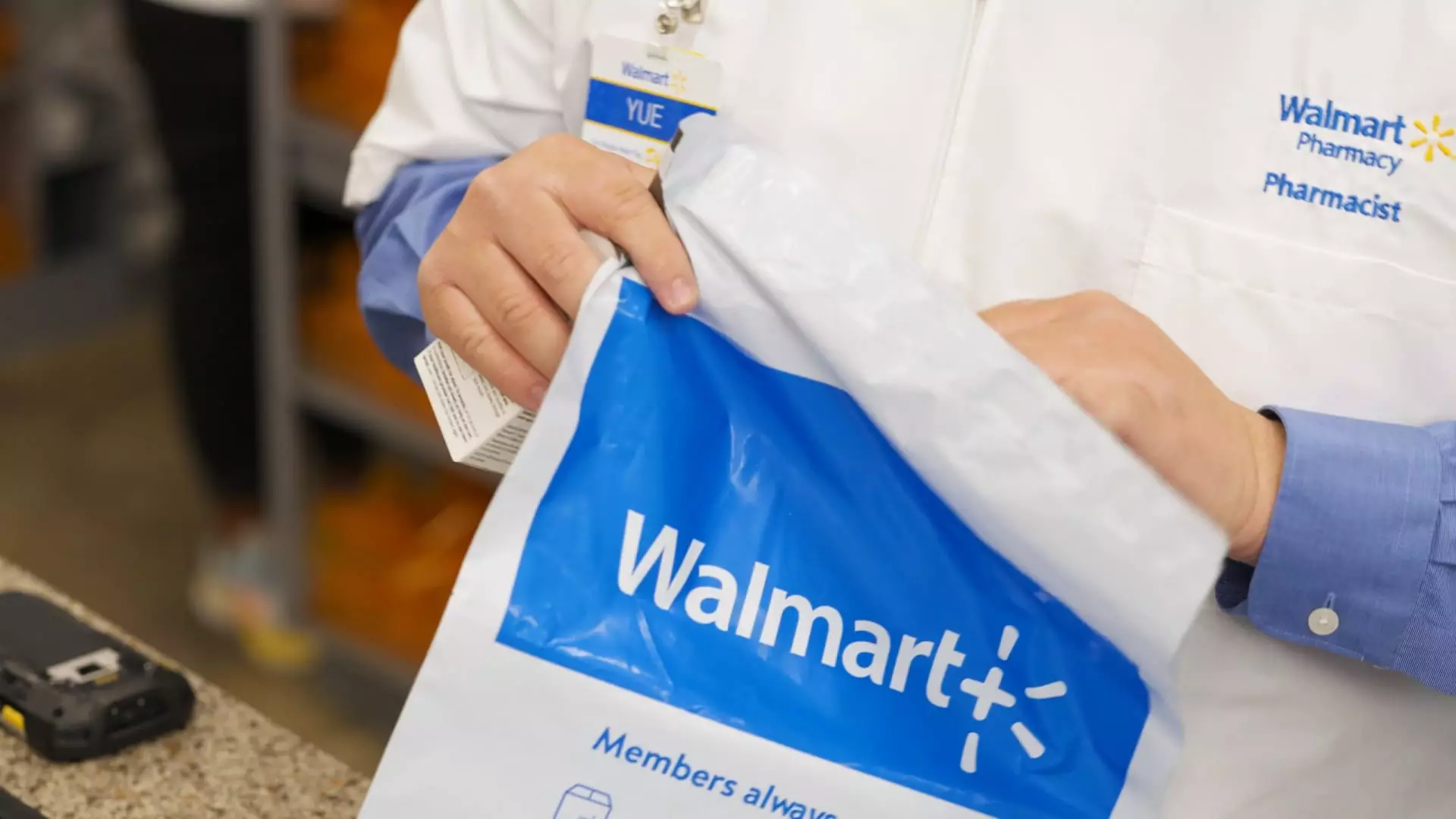The retail pharmacy sector is experiencing seismic shifts, driven by dynamic consumer preferences and evolving market conditions. As major players like CVS and Walgreens announce widespread store closures in response to dwindling profits and investor discontent, Walmart has boldly stepped forward with a new prescription delivery service. This initiative, designed to cater directly to the growing demand for convenience, marks a calculated strategy aimed at capturing a share of the increasingly competitive healthcare market. With deliveries already available in six states and plans to extend to 49 states by early 2024, Walmart is strategically positioning itself at the intersection of retail and healthcare.
Walmart’s decision to launch this delivery service is not merely a reactive measure; it is a direct response to consumer demands. According to Tom Ward, Walmart’s Chief E-commerce Officer, pharmacy delivery emerged as one of the most requested services from customers. This reveals a critical insight: in an age where convenience reigns supreme, retailers must adapt to fulfill the demands of their clientele. During the pilot phase, the company noted customers frequently paired their prescriptions with other essential items, highlighting an opportunity to create a more holistic shopping experience. Such integration allows Walmart to leverage its extensive retail portfolio, ensuring customers can receive everything they need in one seamless delivery.
The financial model for Walmart’s prescription delivery aligns with their broader business strategy of low-cost leadership. At a standard delivery fee of $9.95 — waived for Walmart+ members — the supermarket giant is making a calculated move to bolster customer loyalty while offering a service that directly competes with existing pharmacy chains. Notably, Walmart’s initiative does not just venture into prescription delivery but seeks to offer bundled deliveries of related health and wellness products, a tactic meant to enhance perceived value for consumers.
More importantly, Walmart’s focus on convenience comes with an emphasis on safety. The prescriptions are delivered in tamper-evident packaging and require customers to consult with a pharmacy professional prior to order fulfillment, distinguishing their service from conventional deliveries.
As Walmart broadens its footprint in the pharmacy space, CVS and Walgreens face increasing pressure to adapt to this new reality. Both companies have struggled with market pressures stemming from reduced reimbursement rates, inflation, and a consumer base that is increasingly digital-first. While CVS still holds the largest market share in terms of prescription drug revenue, accounting for over 25%, the landscape is shifting. Walmart’s growth in pharmacy services could siphon off significant market share, particularly as it enhances its health and wellness offerings to include more clinical services.
Consequently, the turmoil within CVS, showcasing leadership changes and plans to cut billions in expenses, should not be overlooked. Walgreens’ announcement of closing about 1,200 locations likewise underscores its struggles to remain profitable, as a quarter of its stores are reportedly unprofitable. In contrast, Walmart’s growth trajectory — reflected by a significant stock price increase — emphasizes the potential success of its health-focused initiatives.
Walmart’s new venture into prescription delivery showcases the necessity for retail pharmacies to reconsider traditional delivery and service models. The convergence of healthcare and retail is reshaping industry standards, and as companies like Walmart invest in innovative strategies, the prospect of a more integrated shopping experience could redefine consumer expectations.
As the healthcare landscape continues to evolve, understanding the implications of such retailer-driven initiatives will be essential. For instance, will traditional pharmacy chains adapt to meet this convenience-oriented demand, or risk further decline? Furthermore, Walmart’s approach to blending healthcare into its retail operations indicates a paradigm shift towards a more consumer-centric model, an evolution that may prompt others in the industry to rethink their strategies.
Ultimately, as this competition intensifies and retailers like Walmart set new standards for convenience and service, the future of prescription delivery and retail healthcare will likely adopt a new framework that prioritizes efficiency, accessibility, and customer satisfaction. As these dynamics unfold, stakeholders across the industry will need to remain vigilant, responsive, and innovative, navigating a rapidly changing landscape where consumer preferences reign supreme.

Leave a Reply